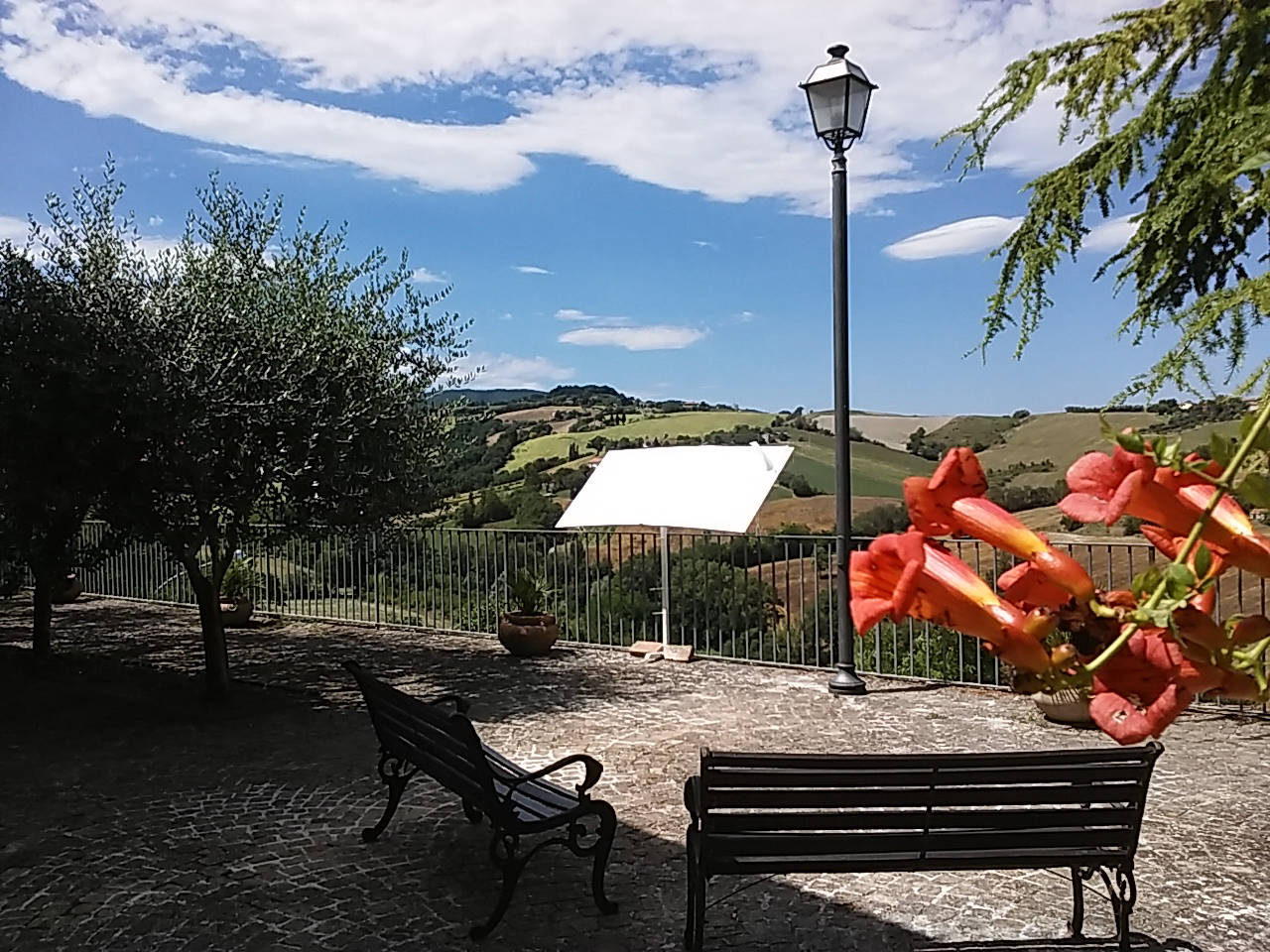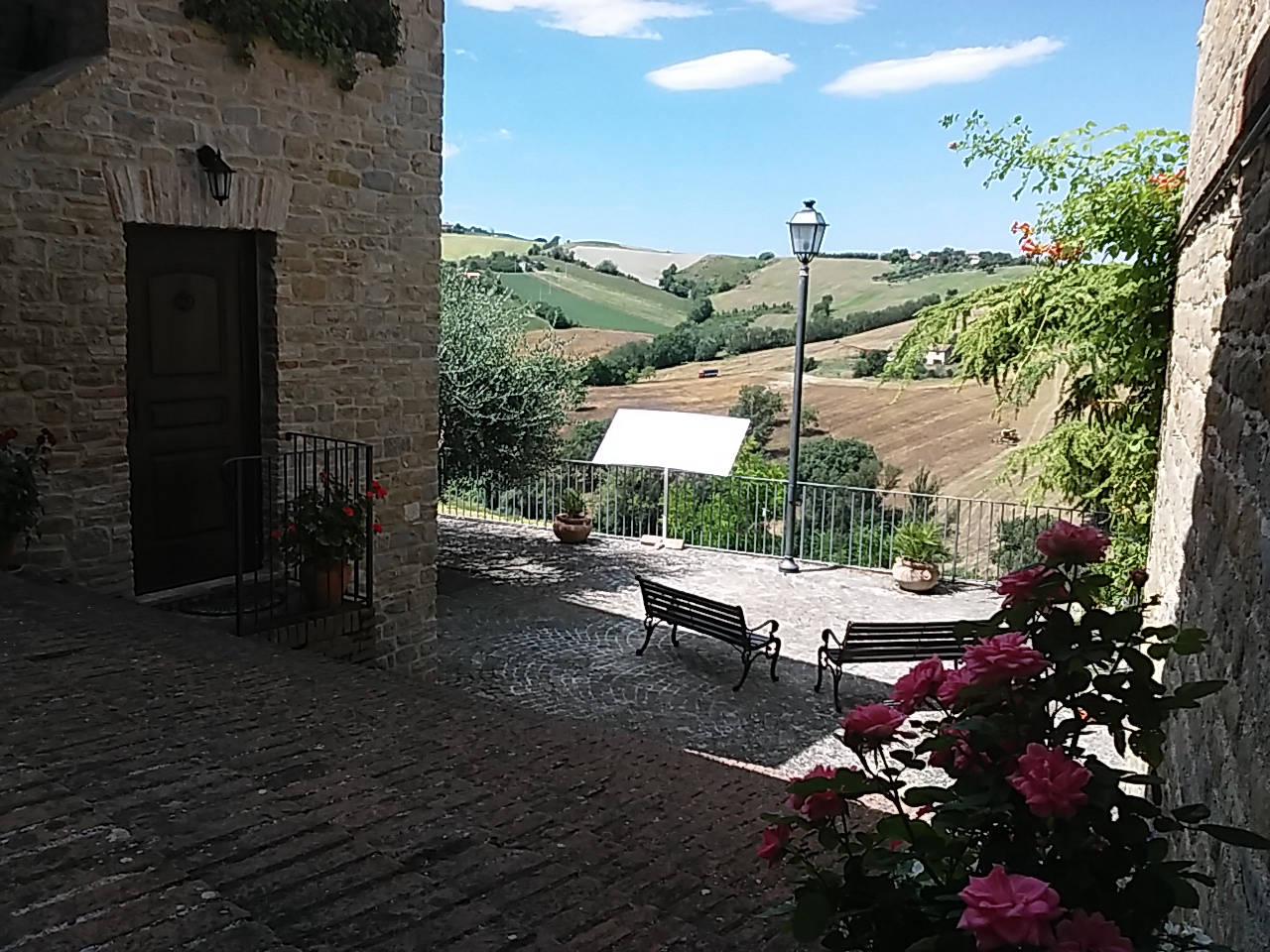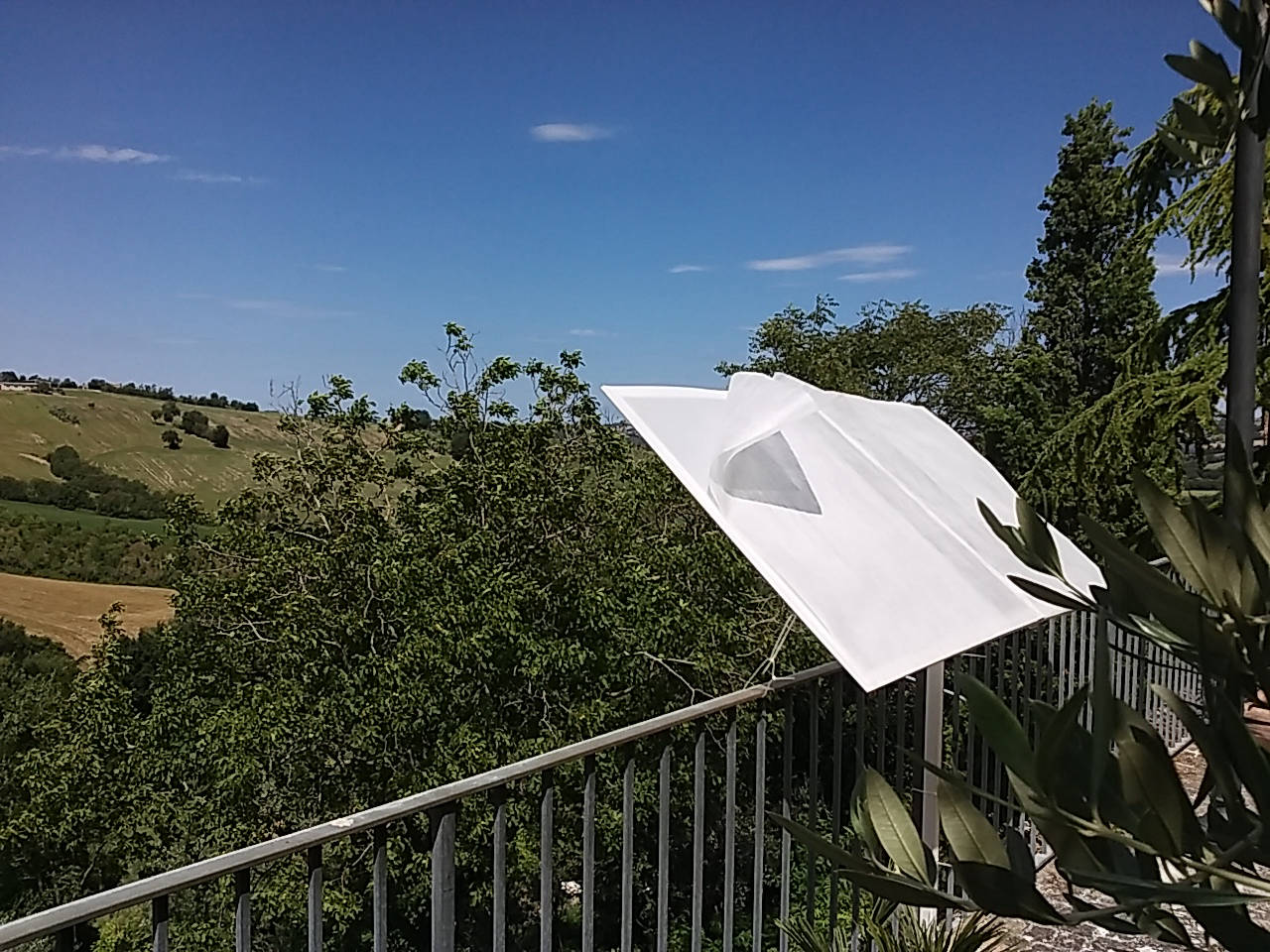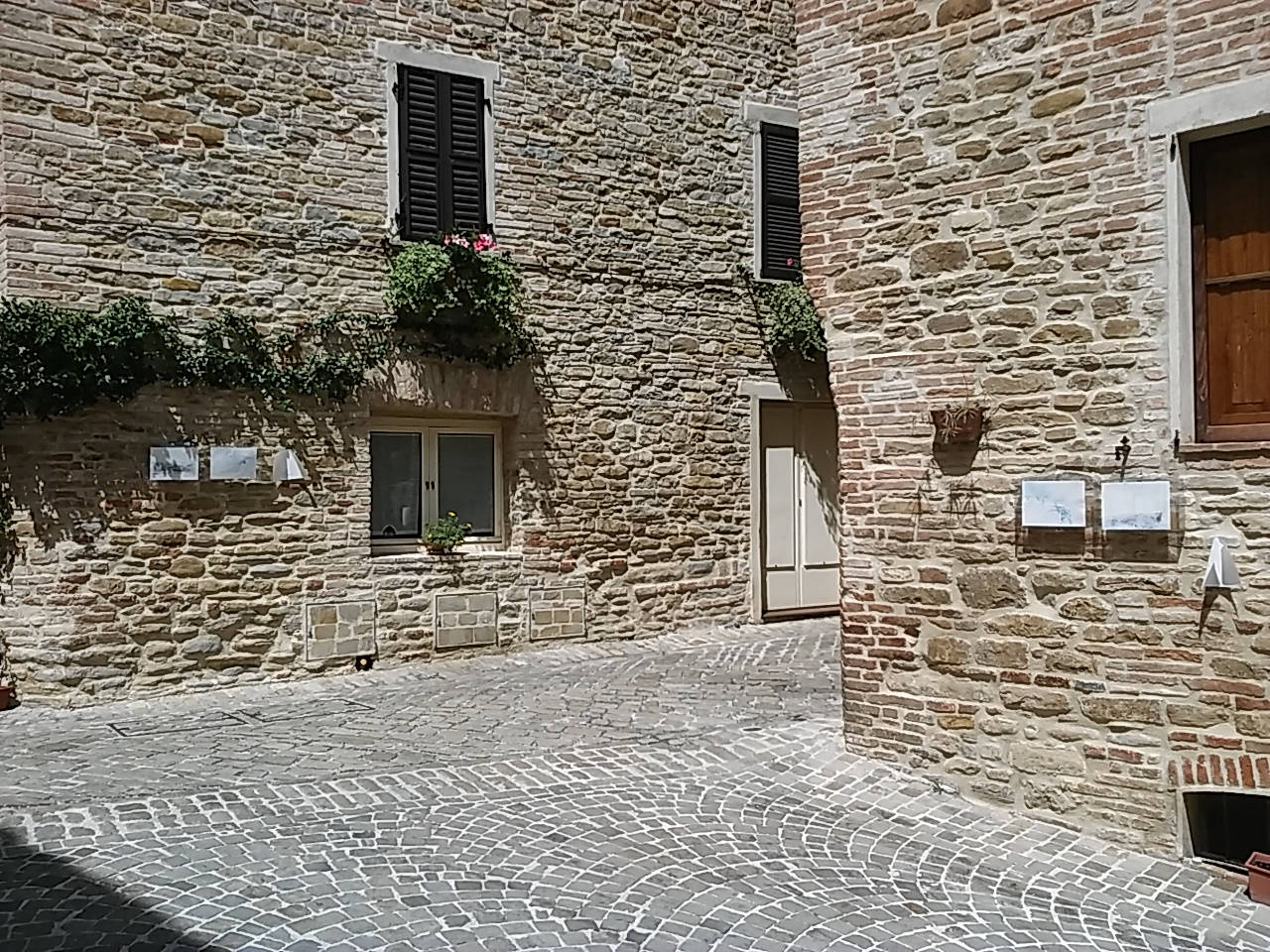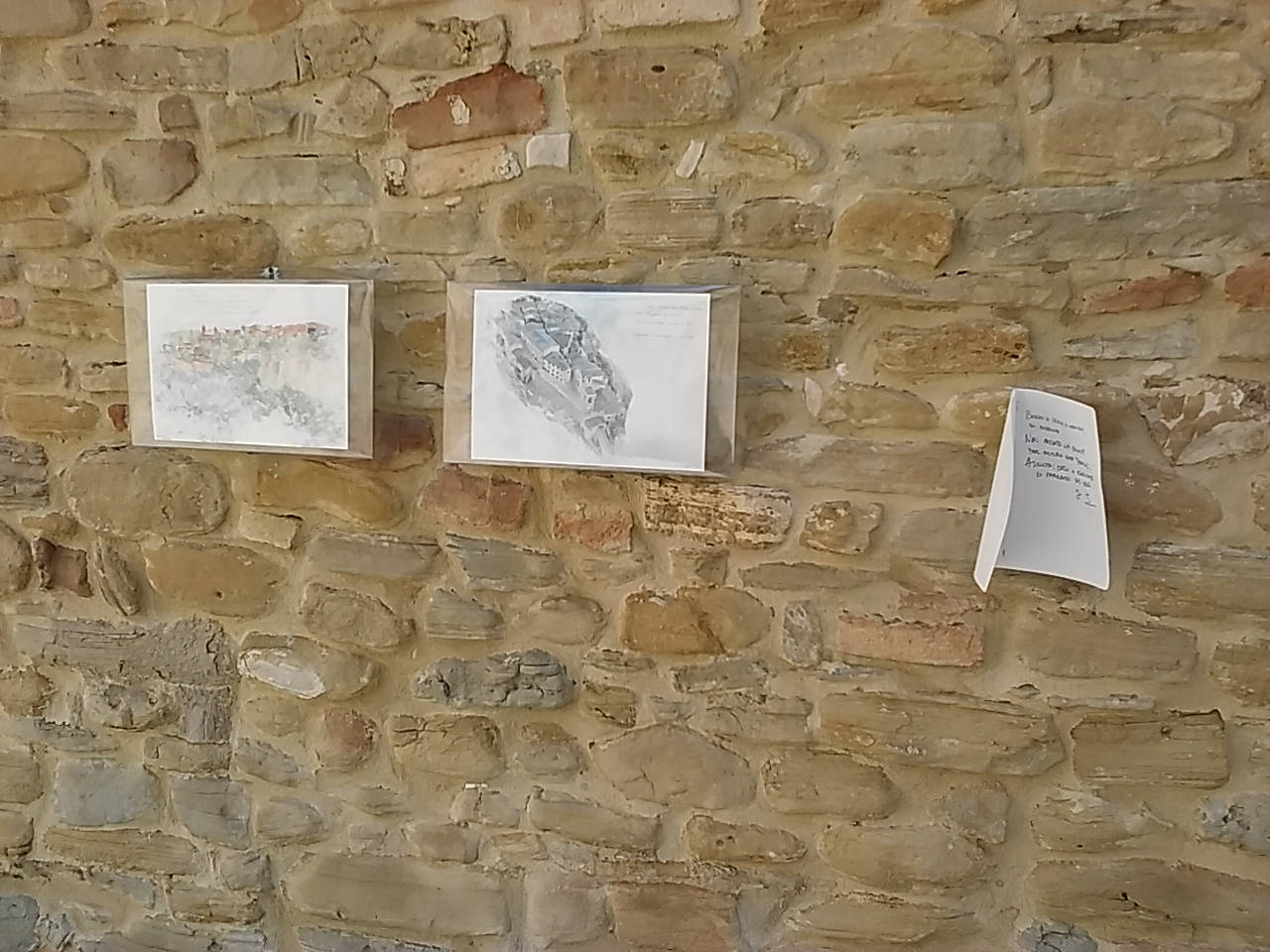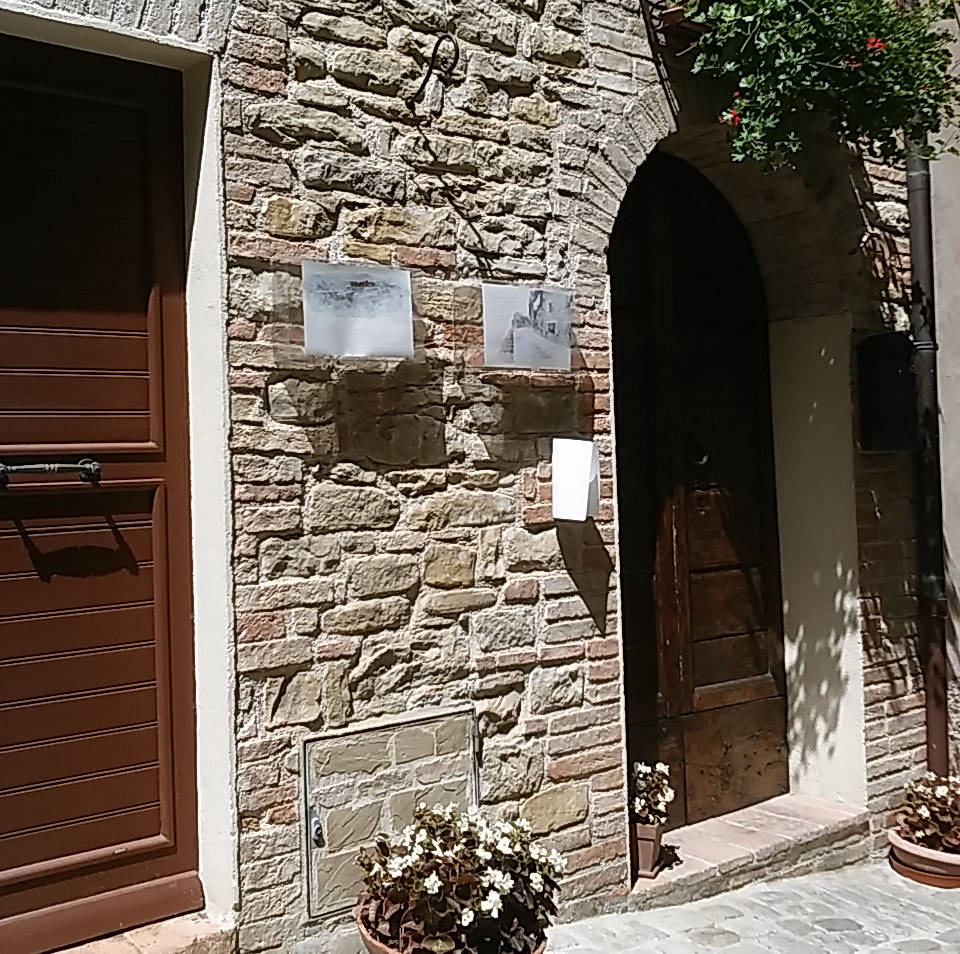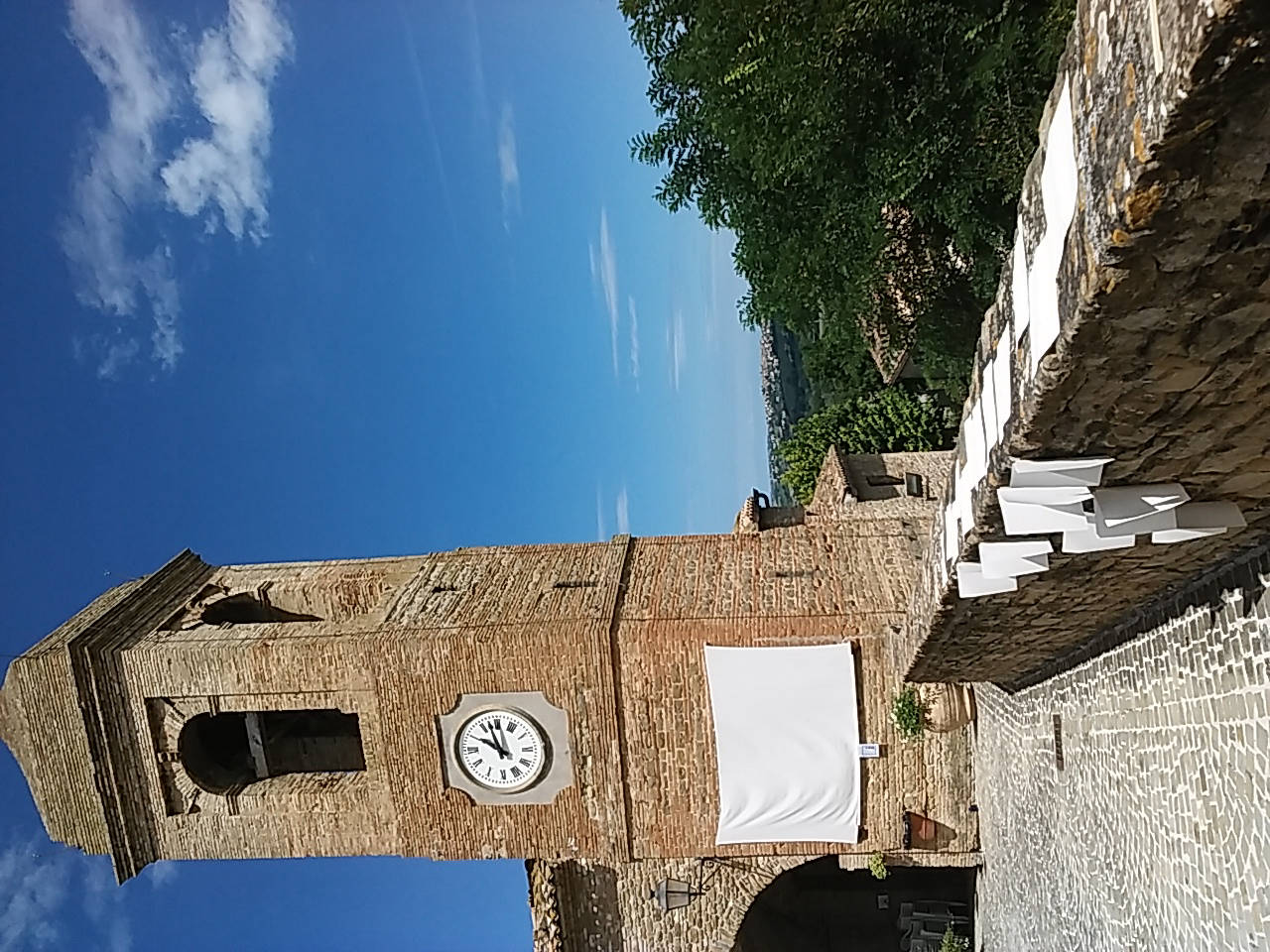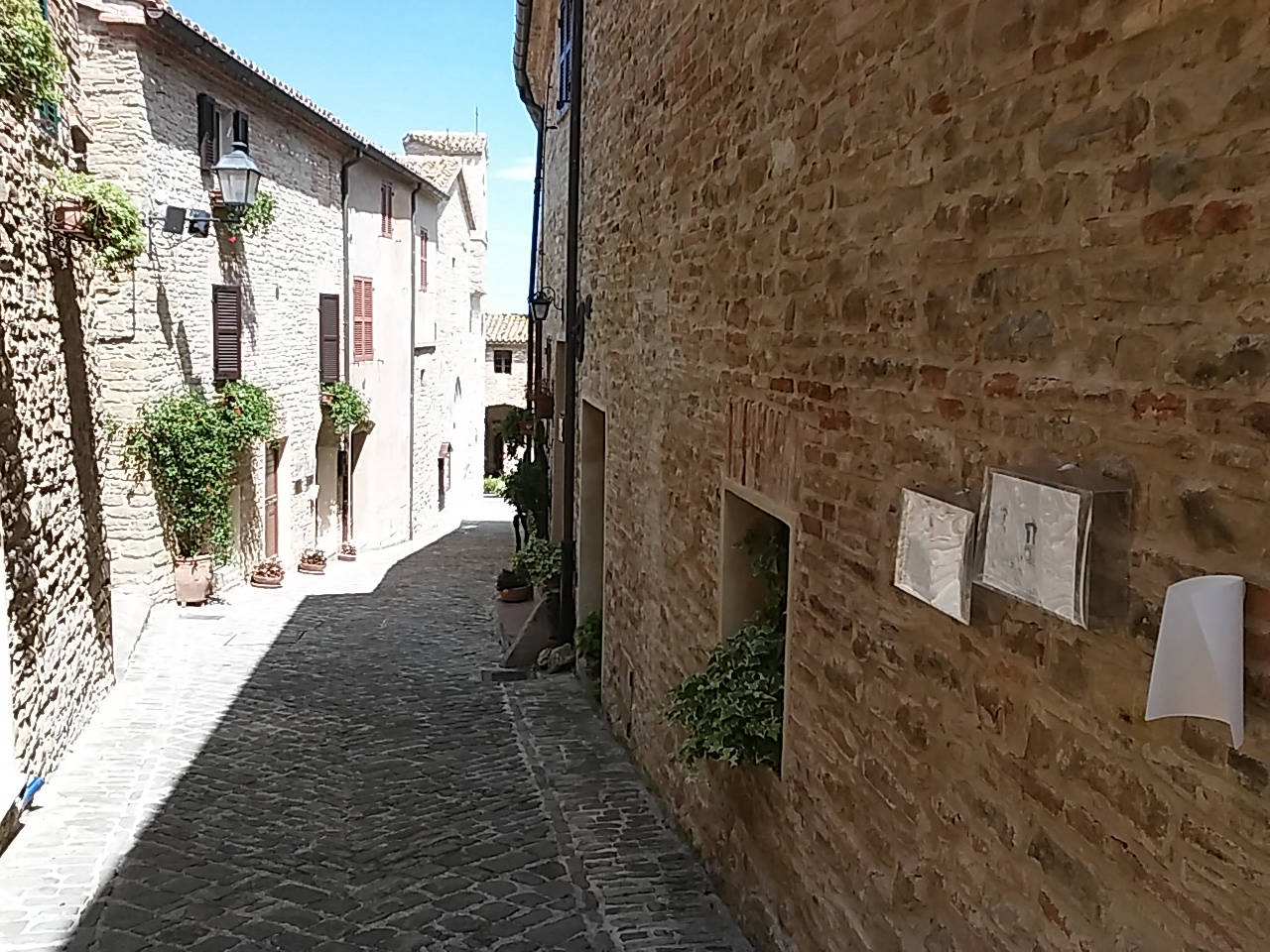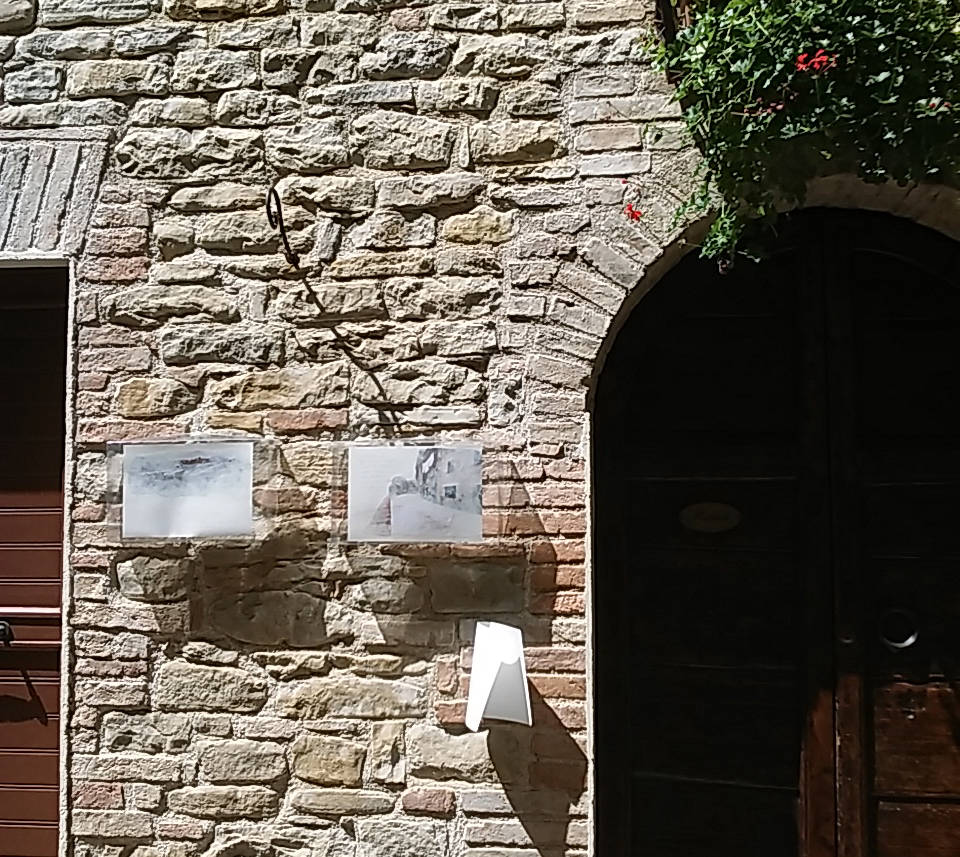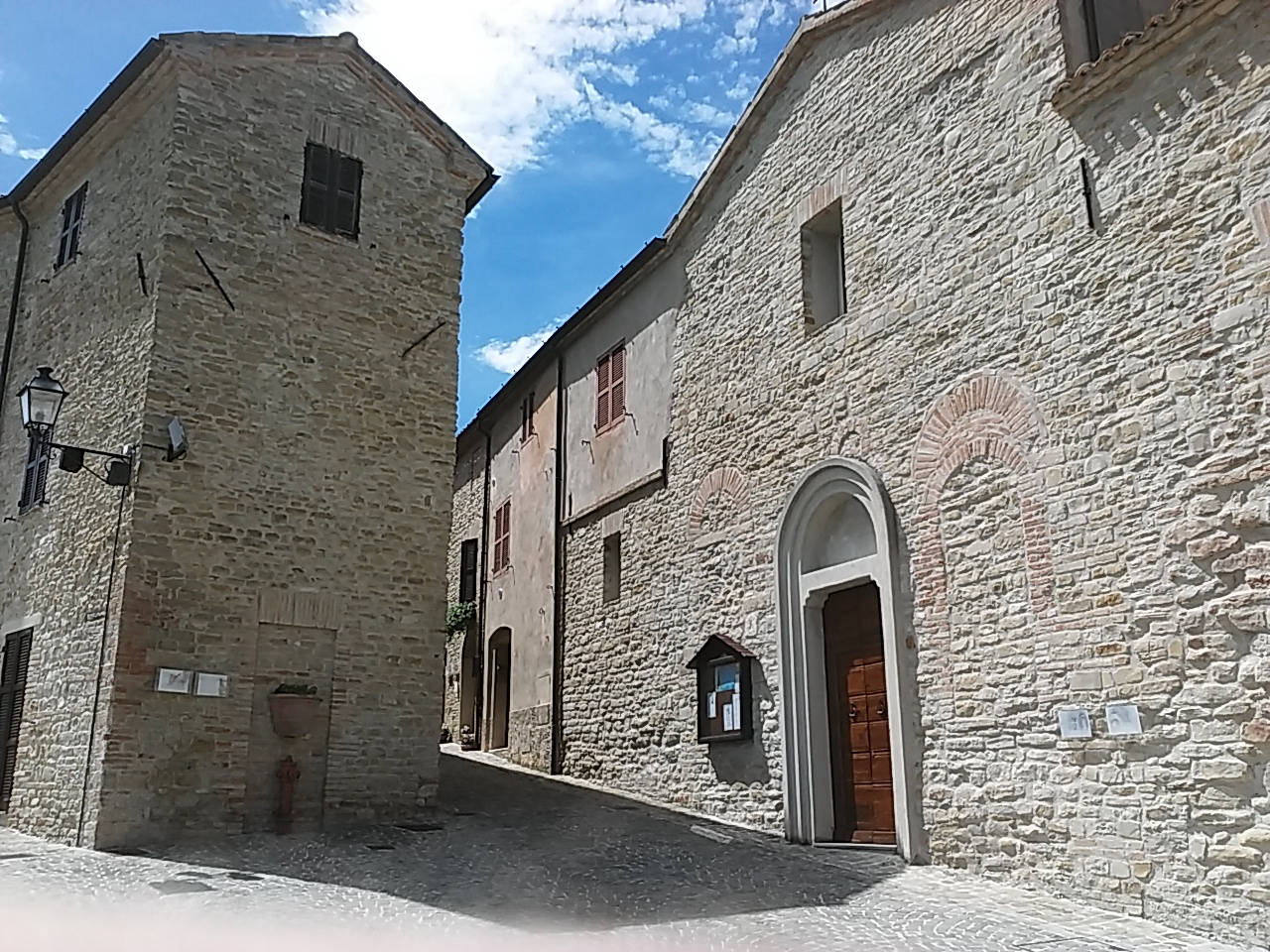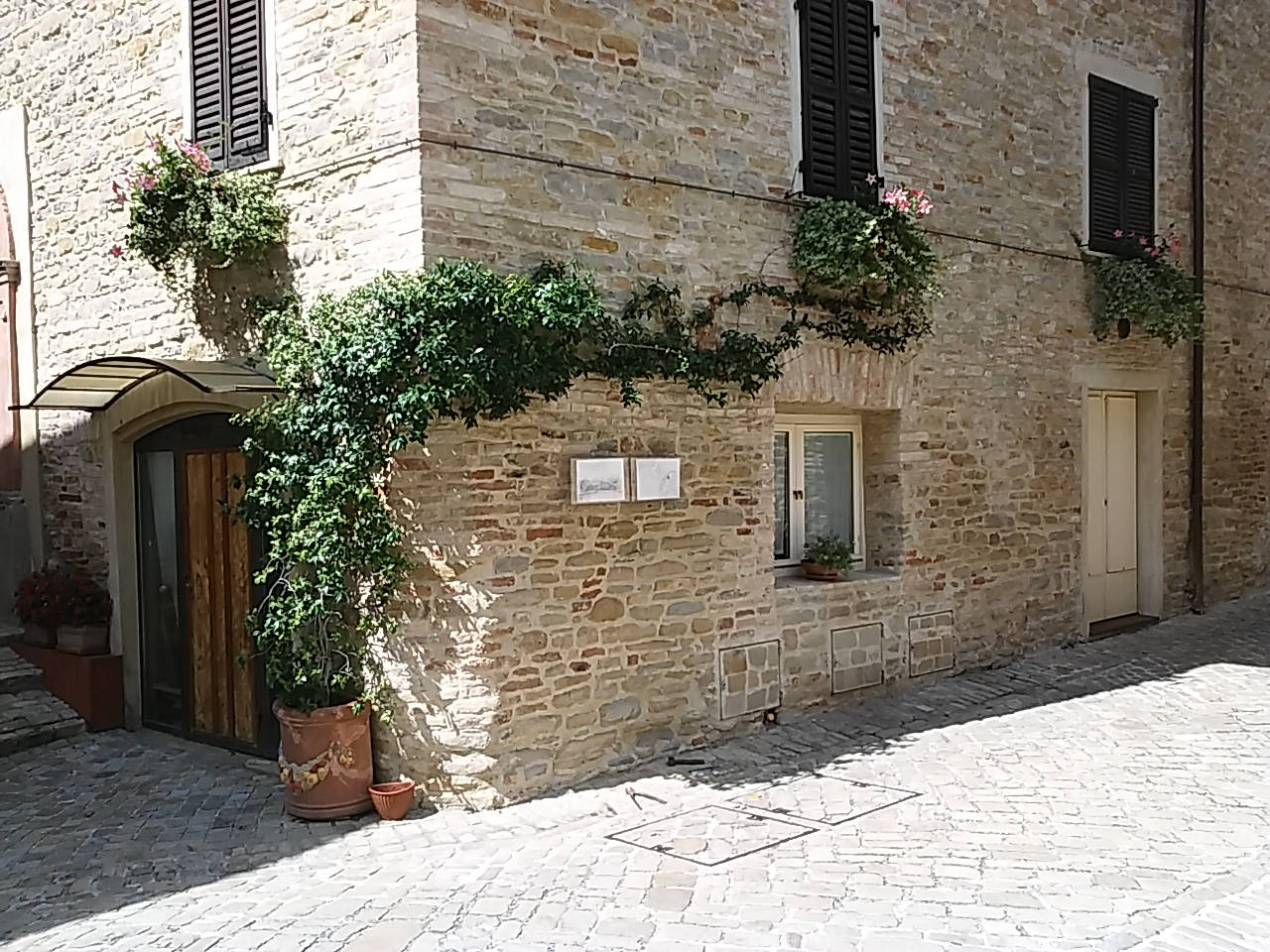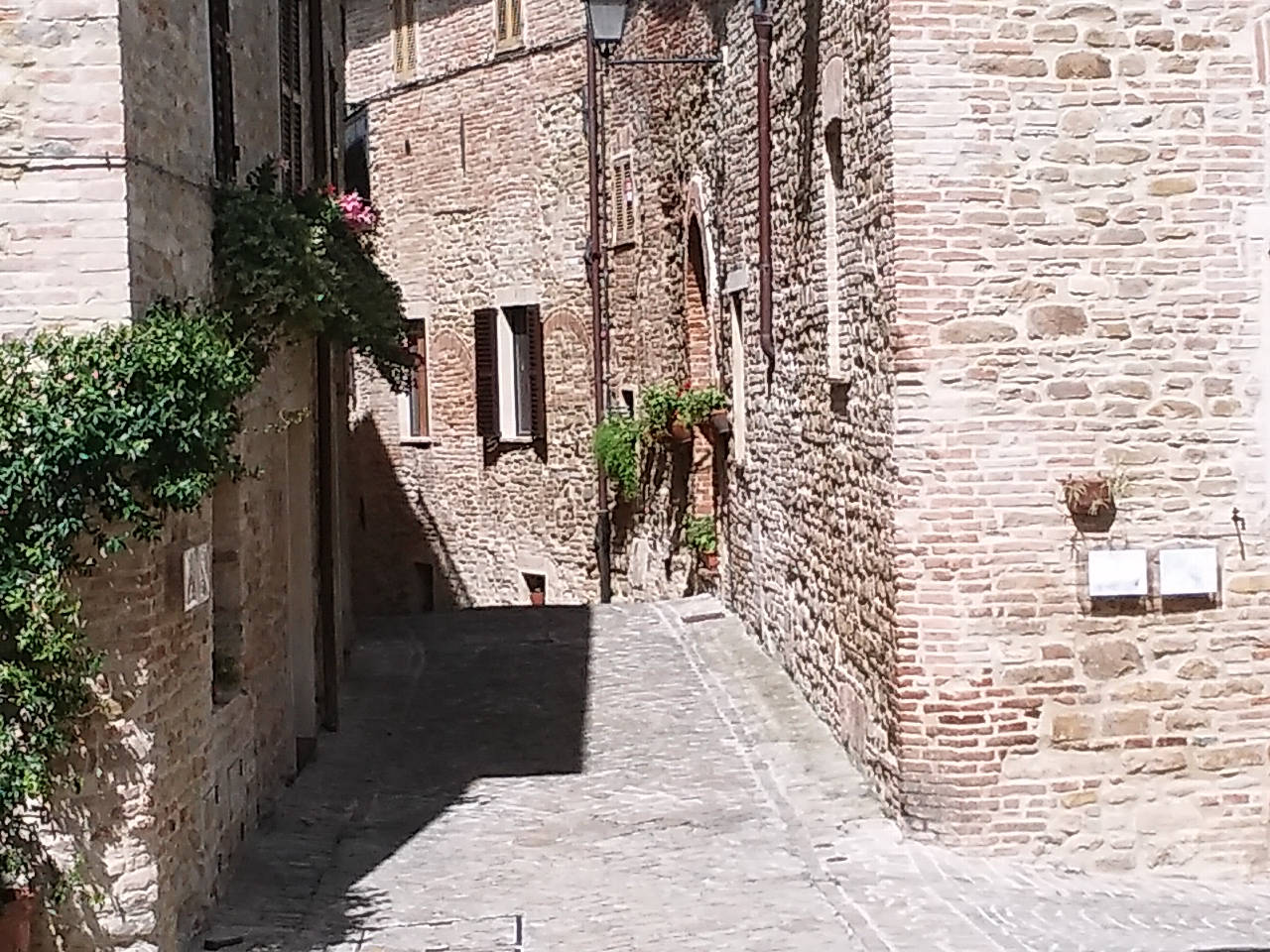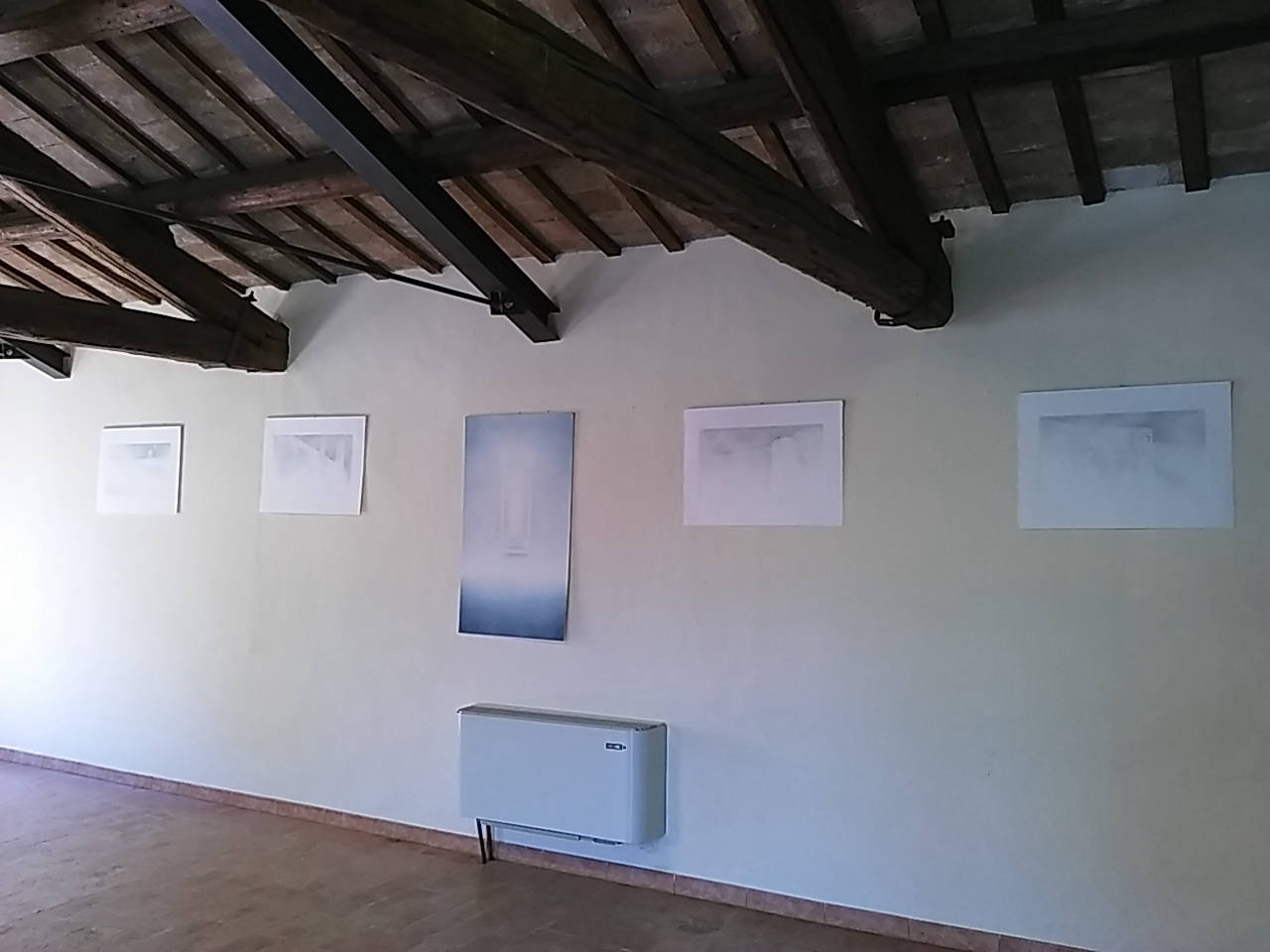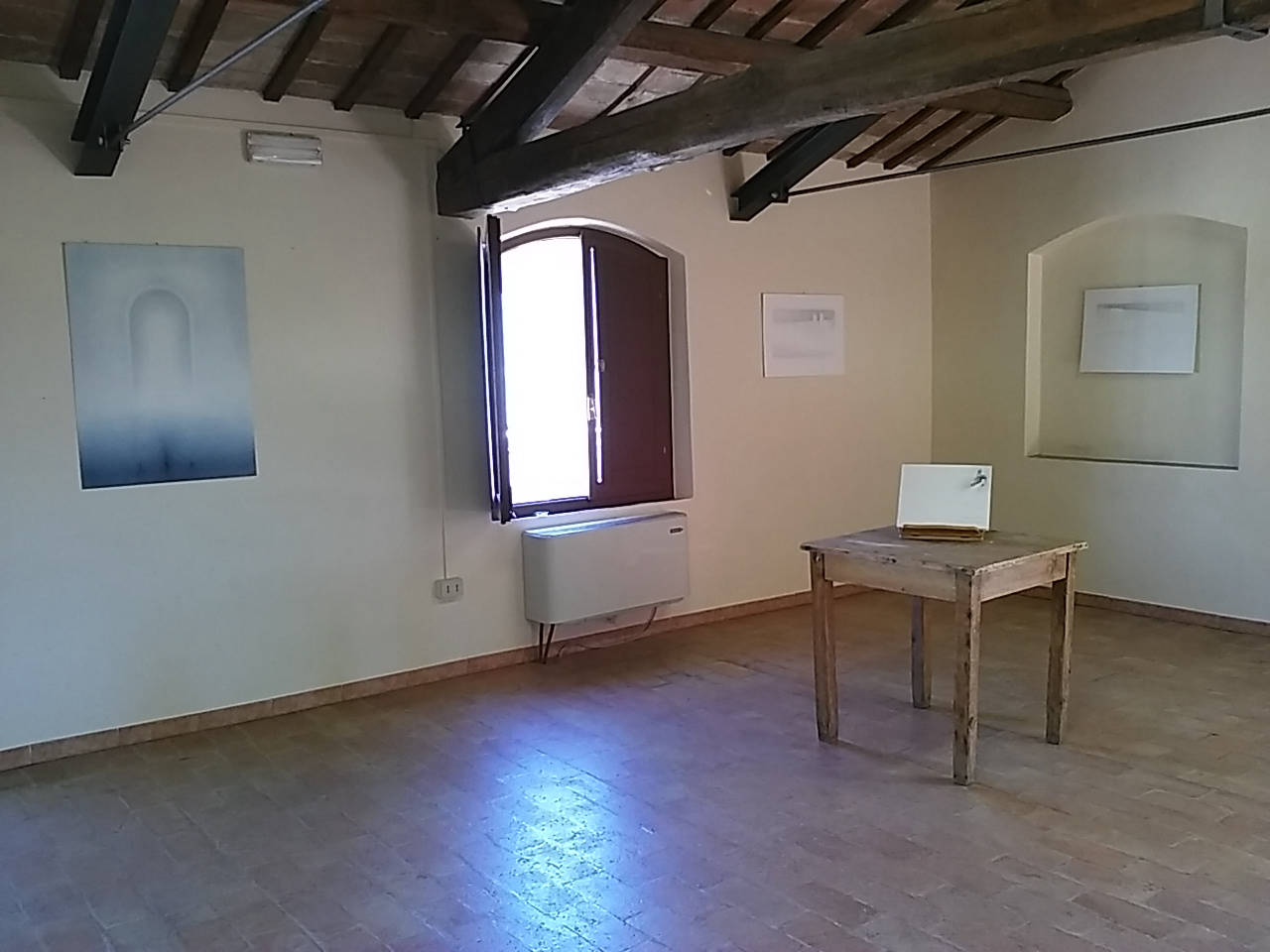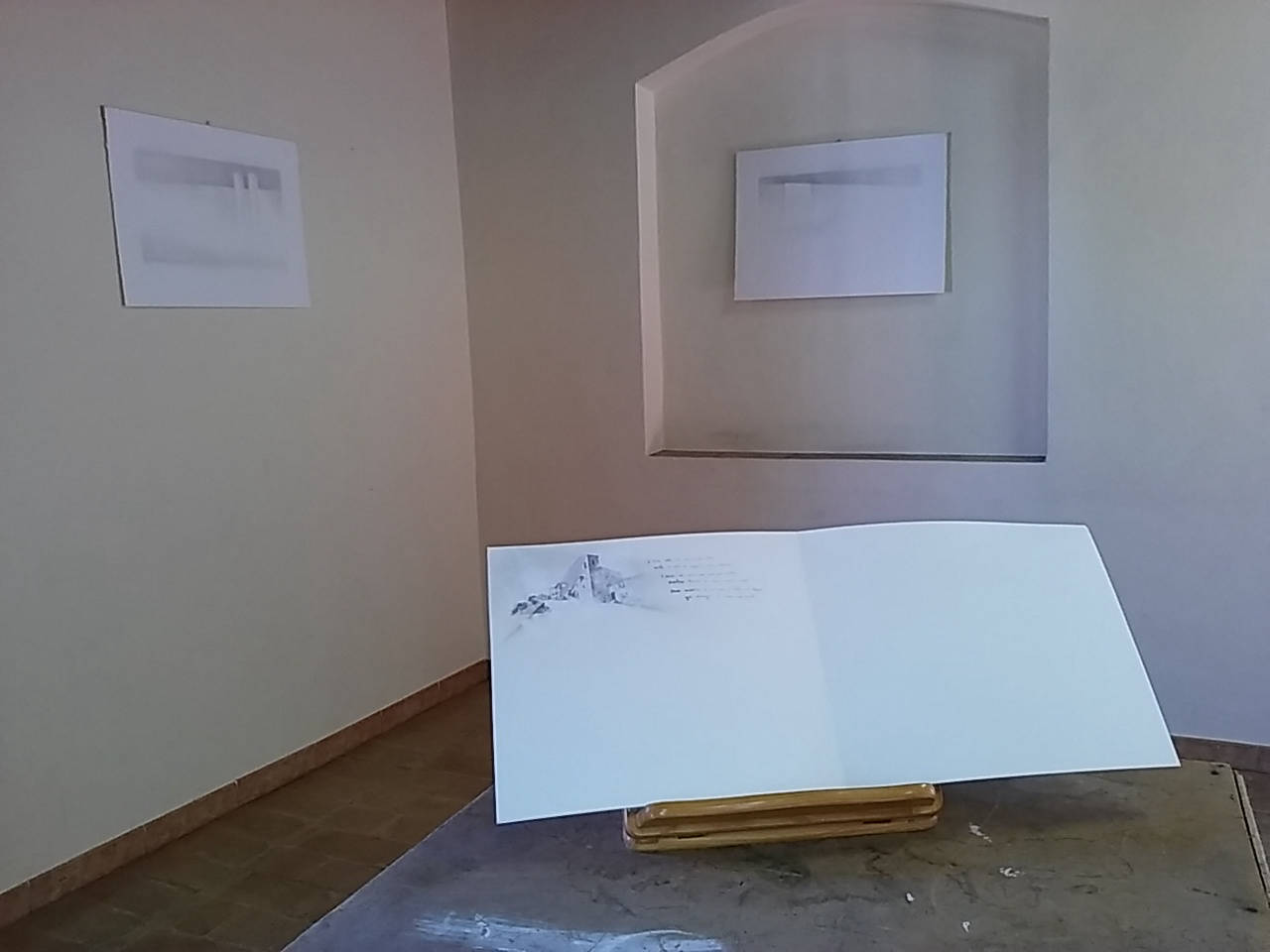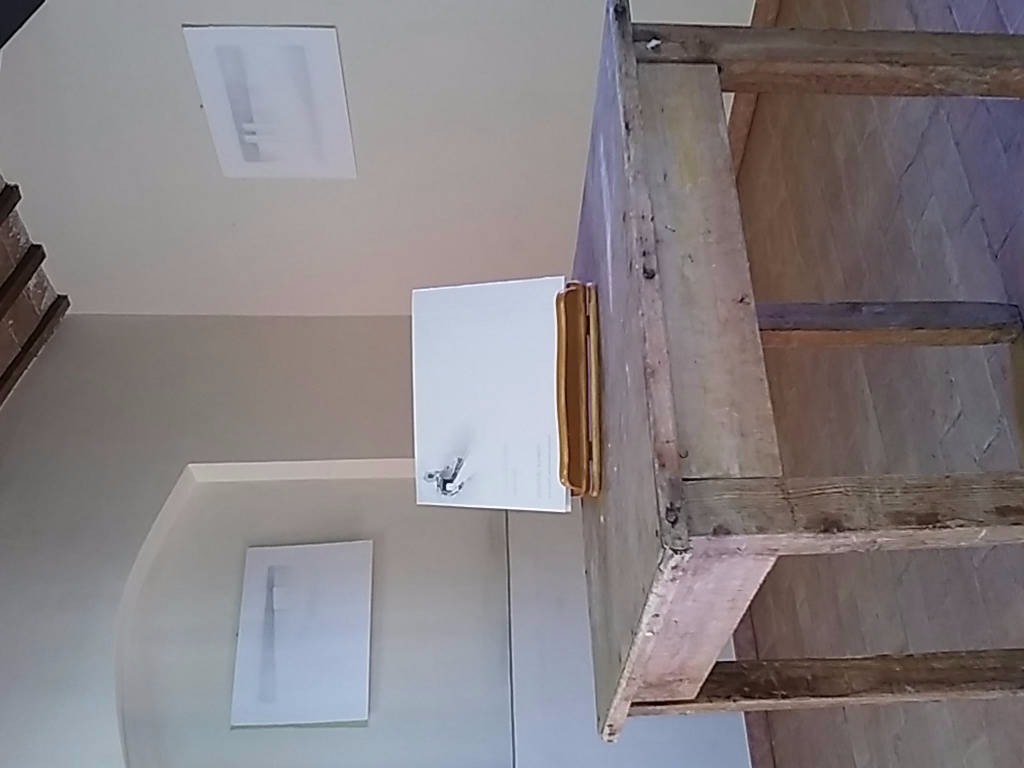L’evento pensato per il Castello di Castiglioni nell’ambito di Ar(t)cevia International Festival è un percorso artistico che si articola in due parti; una più “tradizionale” situata all’interno del Vecchio Mulino, dove sono esposti disegni a grafite disposti a circolo, a voler richiamare il giro delle mura che circonda il borgo, con alle estremità due dipinti ad acquerello a grande dimensione ad evocare le porte reali, il tutto a chiudere la mostra in un “dentro”, dove si colloca il Diario vero e proprio, opera interagibile che simboleggia metaforicamente il paese stesso e doce ciascun visitatore può scrivere liberamente, sia una semplice firma di presenza, ma anche pensieri, riflessioni, commenti inerenti al Castello di Castiglioni.
La seconda parte si trova invece all’esterno, lungo le vie, le strade, le piazze e le mura e l’idea è quella di interagire con il luogo in modo da tener conto di quello che è, che è stato, cioè un luogo reale, abitato, abitabile; girando le strade, osservando l’insieme ed i dettagli, ascoltando storie, racconti, vicende che si sovrappongono e che si sovrapporranno, è nata man mano l’idea che il Castello stesso sia racconto, storia, libro, e di conseguenza l’idea artistica è quella di realizzare un diario, o meglio, “trasformare” il paese stesso in diario, le cui pagine sono installate nelle strade, sparse, senza un apparente percorso predisposto, ma più somigliante ad un flusso di pensieri che seguono un filo conduttore libero, vanno vengono, possono riaffiorare nuovamente, così come anche il giro di passi di una persona lungo le strade di Castiglioni.
Sono pagine di Diario, di appunti, da trovare, scoprire in giro per il paese e da interpretare in modo personale, che includono immagini reali del luogo, ma rivisitate pittoricamente, contenenti frasi, pensieri, abbinate a due a due per indicare direzioni opposte di significato, pur partendo da uno stesso luogo o da uno stesso stimolo di riflessione, che possono essere le strade, i silenzi, il tempo percepibile, le mura stesse, ecc; forse non è corretto parlare di positivo e negativo, piuttosto di due opposte possibili visioni, concezioni di intendere il luogo, oppure diverse caratteristiche che si prestano ad una lettura bivalente. Tutto questo “gioco del doppio” non è per creare contrapposizione, ma piuttosto per offrire diversi punti di vista su una medesima genesi, entrambi validi, non necessariamente in conflitto; anzi, il lavoro è stato concepito come “aperto” o “in divenire” nel senso che dal medesimo spunto di riflessione si possono aprire potenzialmente infiniti pensieri, parole, memorie, tante quante ne possono nascere nel tempo, ma soprattutto tante quante ogni persona, in base al proprio vissuto ed al proprio sentire, sarà in grado di esprimere.
Per questo nelle pagine installate nelle strade non appaiono persone: esse fanno parte del lavoro non come immagine ma come protagoniste, contribuendo ad aggiungere e magari migliorare direttamente il percorso iniziato, con quello che vorranno scrivere nelle pagine bianche, anch’esse Diario, presenti in Paese. E da qui anche il titolo “Pensieri Bianchi”, proprio perchè su quel bianco delle pagine ognuno può lasciare traccia di sé, nelle pagine libere che fanno parte dell’installazione - oltrettutto realizzate con speciale carta impermeabile – e che possono essere usate, scritte ed eventualmente ricomposte successivamente per creare un Diario comune, che forse con il tempo non sarà più semplicemente un libro, ma Castiglioni stesso, ne raccoglierà le varie identità, i passaggi ed i pensieri, di chi vorrà lasciare traccia di sé.
A presiedere tutto questo è il “grande leggìo”, libro bianco di circa 2 metri di lunghezza, situato nel Belvedere, con pagine libere, aeree al vento, sospeso tra il Borgo e il suo Fuori a far da tramite e dialogo tra il Castello, il paesaggio e le persone, a simboleggiare appunto il diario, un percorso che non è concluso, ma che diventa paese vissuto.
The event meant for the Castiglioni Castle as part of Ar(t)cevia International Art Festival is divided into two parts; a "traditional" one located inside the Old Mill, where there are exposed graphite drawings arranged in a circle, to evocate the walls surrounding the village, with the two Water-color large size pictures at the ends to evoke real doors, the whole meaning to close the show in an "interior", where the real journal itself is situated, interactive work that metaphorically symbolizes the self-same country and where each visitor can write freely, either a simple signature of presence, but also thoughts, reflections, comments relating to the Castiglioni Castle.
The second part is rather outside, in the streets, the squares and on the house walls, and the idea is to interact with the site in order to comprehend what it really is and has been, that is a real place, alive and lived in; walking down the streets, observing the whole and the details, listening to stories, that overlap and that will overlap, we conceived the idea that the Castle itself is story, story book, and as a result the artistic idea is to create a journal, or rather, "transform" the country into that same journal, the pages of which are installed in the streets, scattered, without an apparent path set-up, but more similar to a stream of thoughts following a free thread , they come and go, may resurface again, as does the path of any person walking along the streets of Castiglioni.
They are journal pages, notes, to be found, to be discovered around the country and to be interpreted in a personal way, including real pictures of the place, but pictorially revisited, containing coupled sentences, thoughts, so as to point to opposite directions of meaning, although starting from the same site or from the same stimulus of reflection, which may be the roads, the silences, the perceptible time, the walls themselves, etc.; maybe it is not correct to speak of positive and negative, but rather of two possible opposite visions, conceptions of understanding the place, or different features that lend themselves to a bivalent reading. All this "game of doubles" is not meant to create opposition, but rather to offer different views of the same genesis, both valid, not necessarily in conflict; in fact, the work was conceived as "open" or "in progress" in the sense that from the same food for thought you can potentially open endless thoughts, words, memories, as many as they can arise in time, but especially as many as each person, based on their own life and their own way of feeling, is be able to express.
For this reason, in the pages installed in the streets people do not appear: they are part of the work not as an image but as protagonists, helping to add and maybe directly improve the path begun, with what they are going to write in the white pages, which are also journal, found in the Town. And hence the title " White Thoughts", just because of that white pages where each one can leave a trace of themselves, on the free pages that are part of the installation – moreover as they are made with special waterproof paper - and which can be used, written on and possibly later reassembled to create a common journal, that perhaps in time will no longer be just a book, but Castiglioni itself, it will gather the several identities, steps and thoughts of those who want to leave a trace behind.
Presiding over it all is the white paper, 2 meters long "great stand" located in Belvedere, with free, airy pages to the wind, suspended between the Borgo and its Outside to act as connecting-link and dialogue between the Castle, the landscape and the people, to symbolize precisely the journal, a journey that has not ended, but that becomes experienced country.
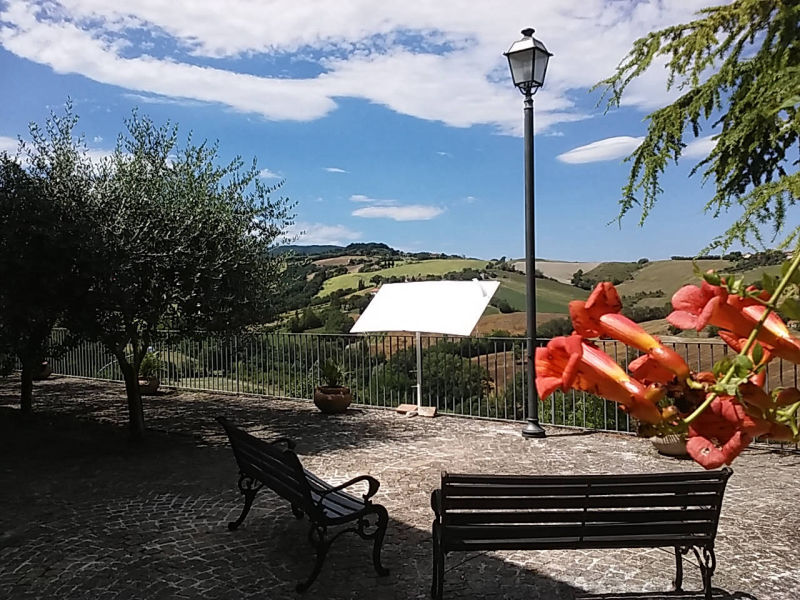 Il grande leggio nel Belvedere
Il grande leggio nel Belvedere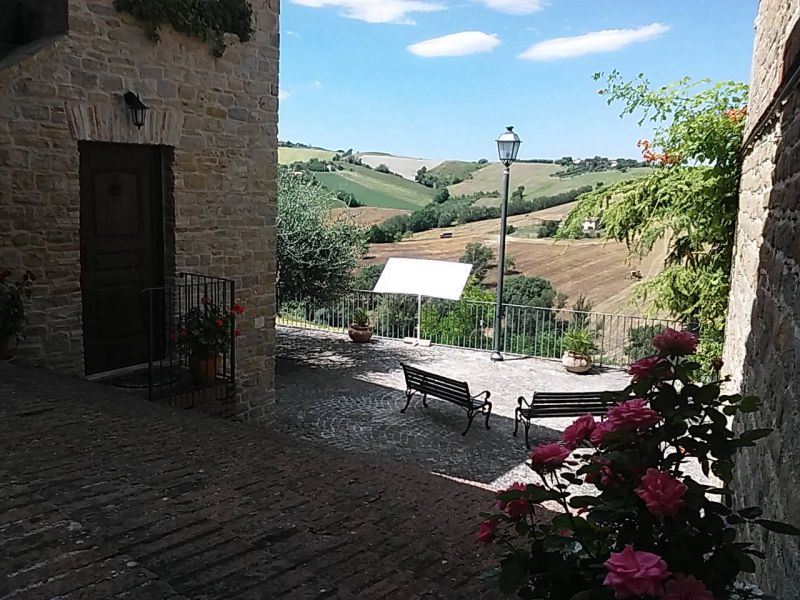 Il grande leggio nel Belvedere
Il grande leggio nel Belvedere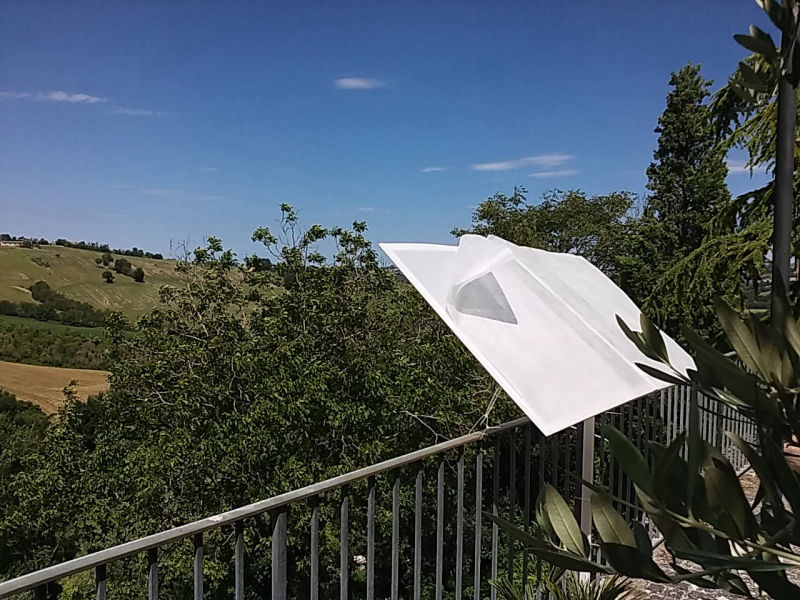 Il grande leggio nel Belvedere
Il grande leggio nel Belvedere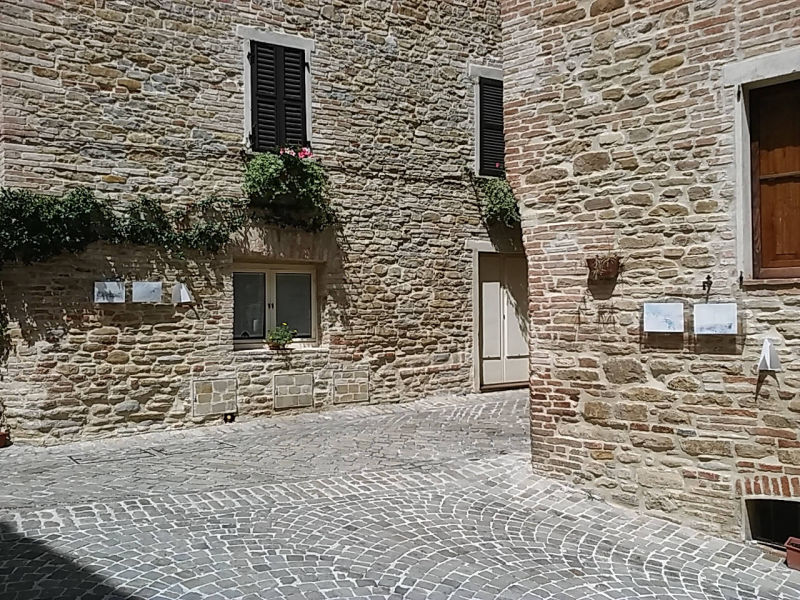 the diary's pages in the town
the diary's pages in the town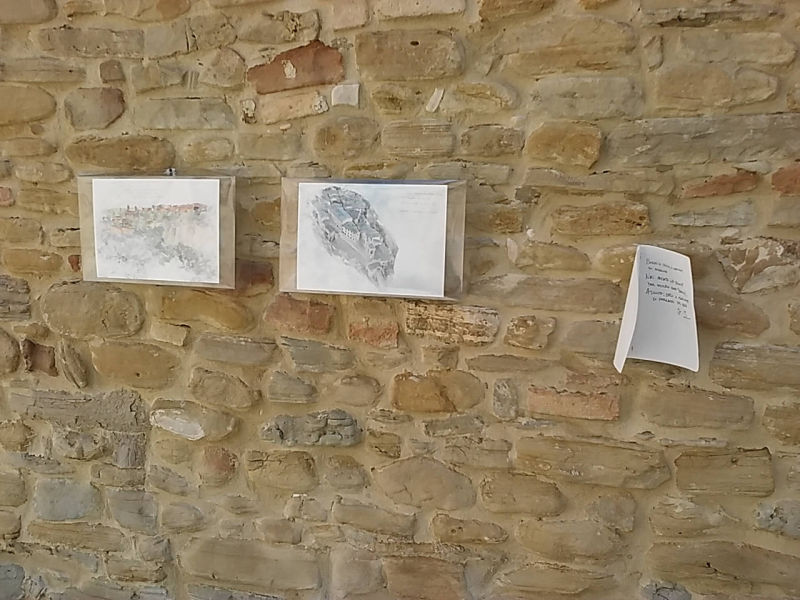 the diary's pages in the town
the diary's pages in the town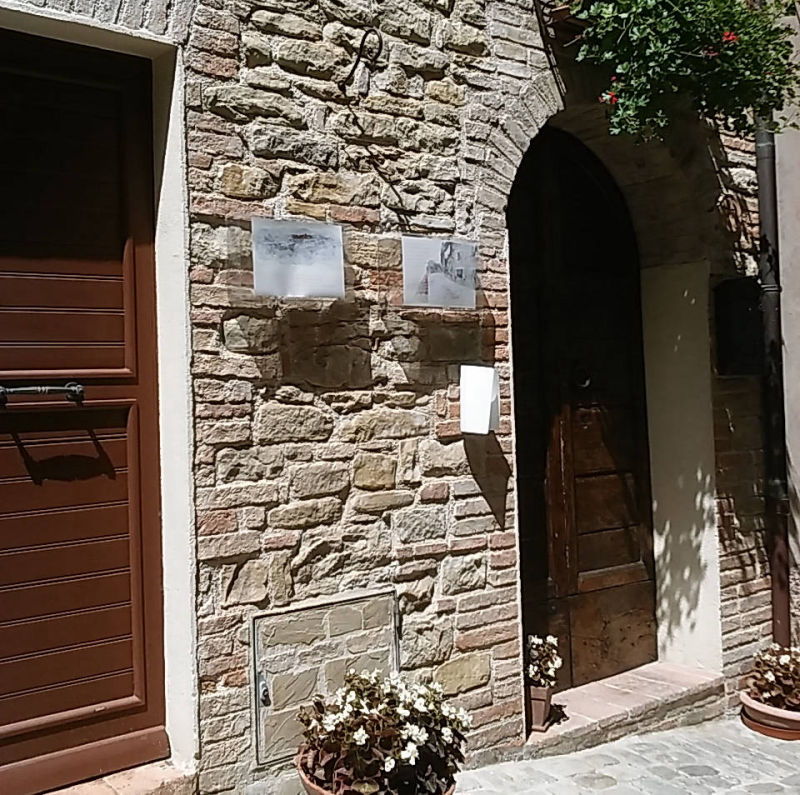 the diary's pages in the town
the diary's pages in the town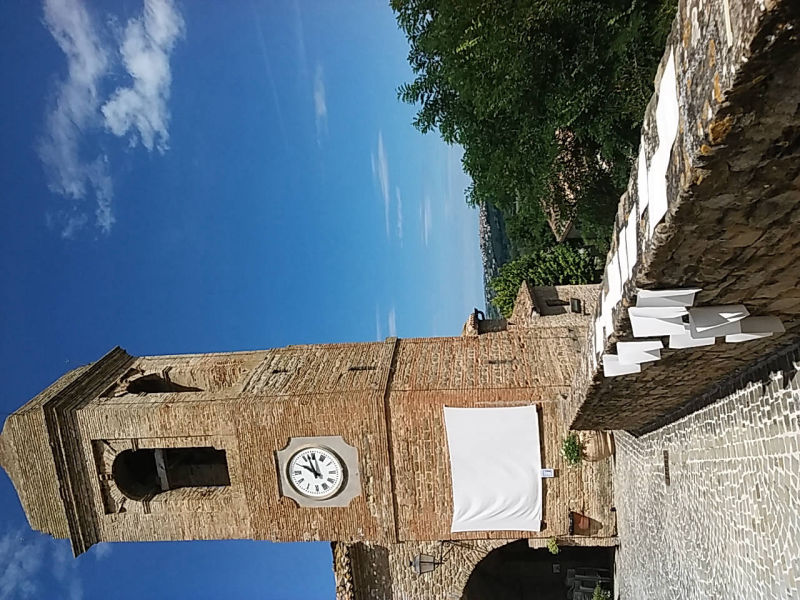 the diary's pages in the town
the diary's pages in the town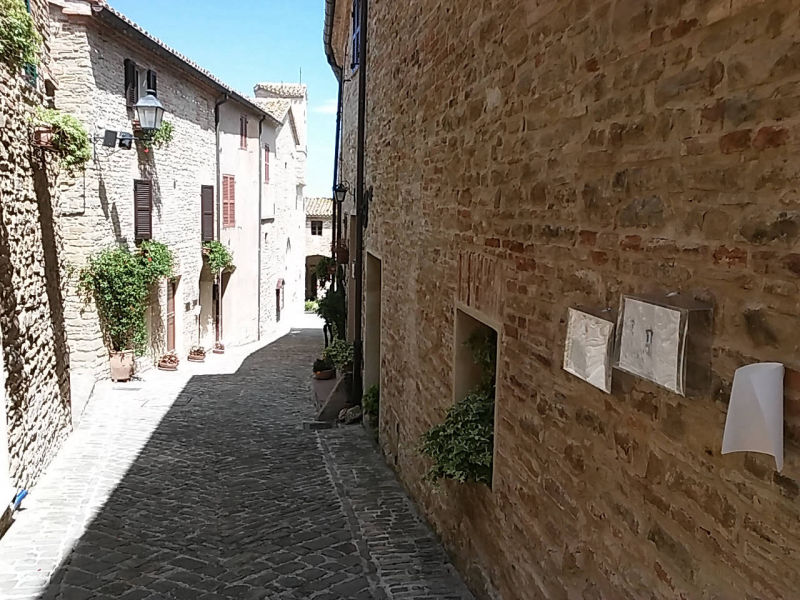 the diary's pages in the town
the diary's pages in the town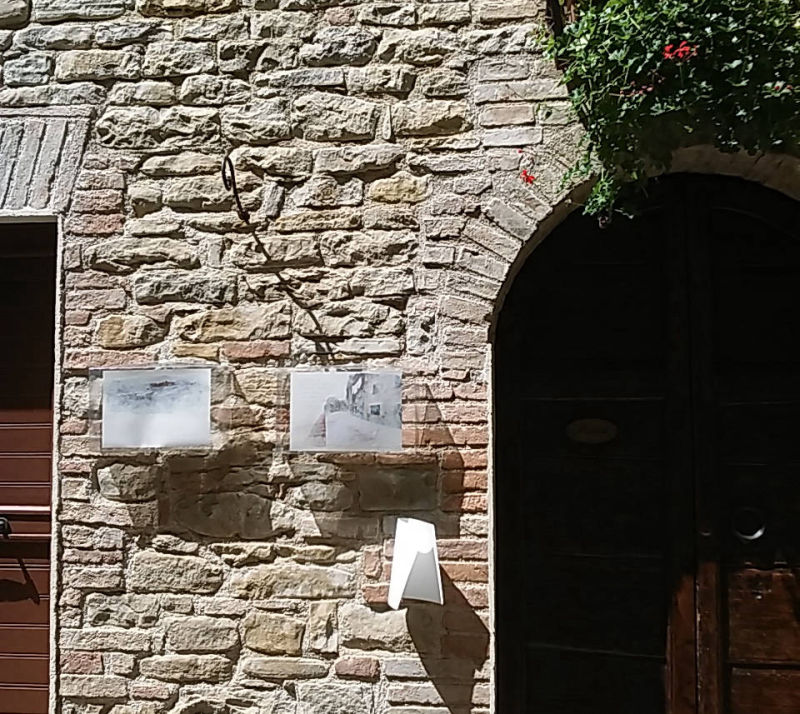 the diary's pages in the town
the diary's pages in the town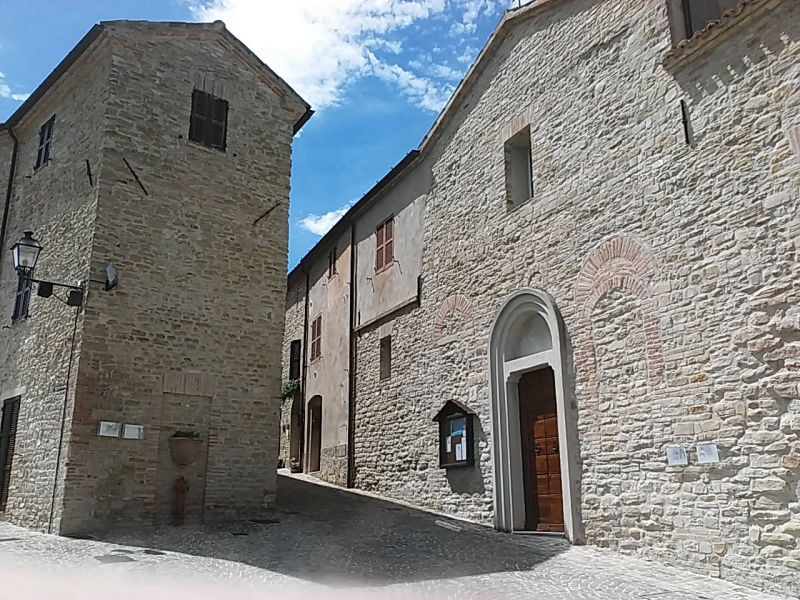 the diary's pages in the town
the diary's pages in the town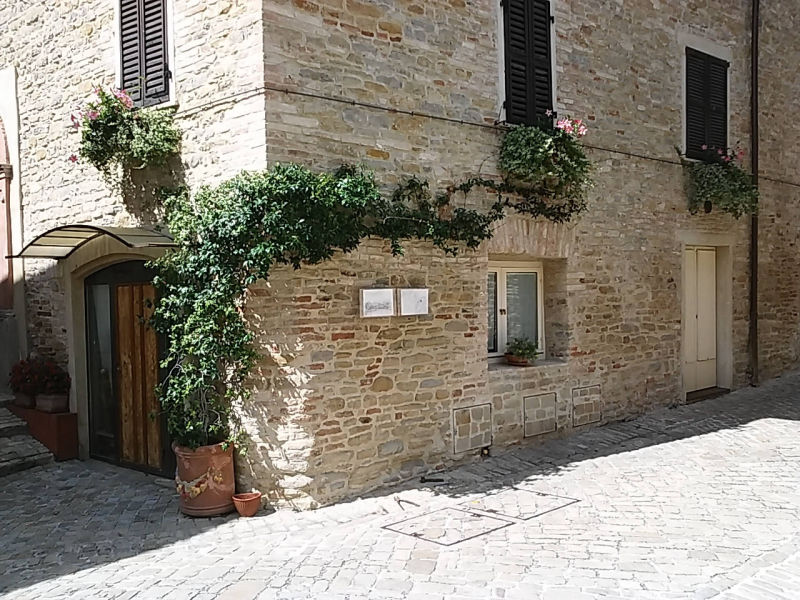 the diary's pages in the town
the diary's pages in the town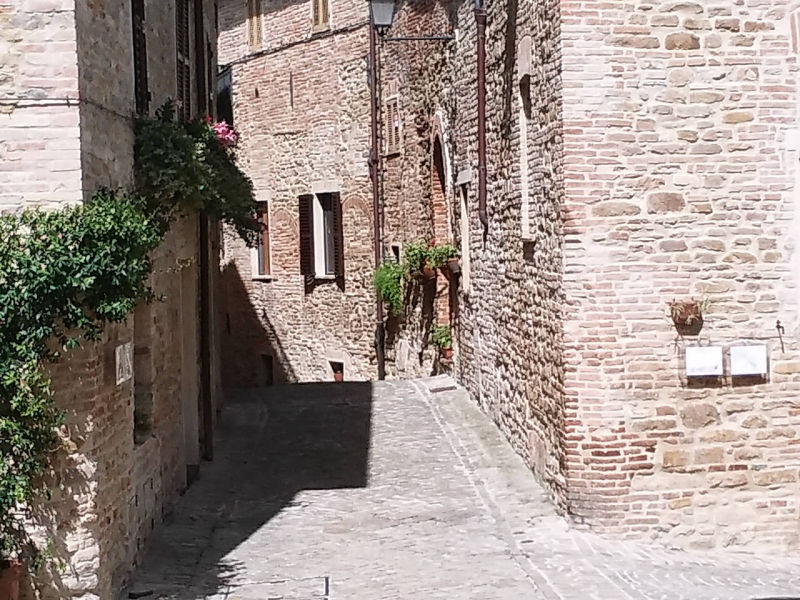 the diary's pages in the town
the diary's pages in the town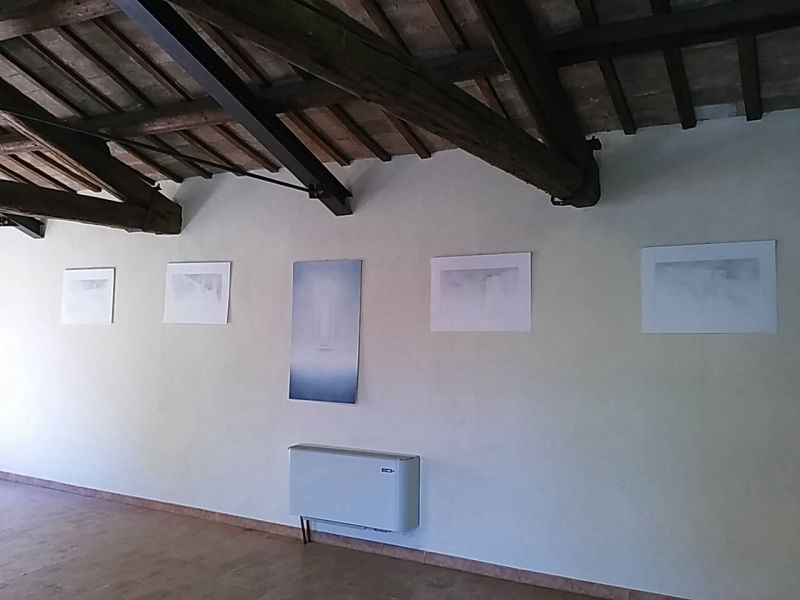 allestimento nel vecchio mulino
allestimento nel vecchio mulino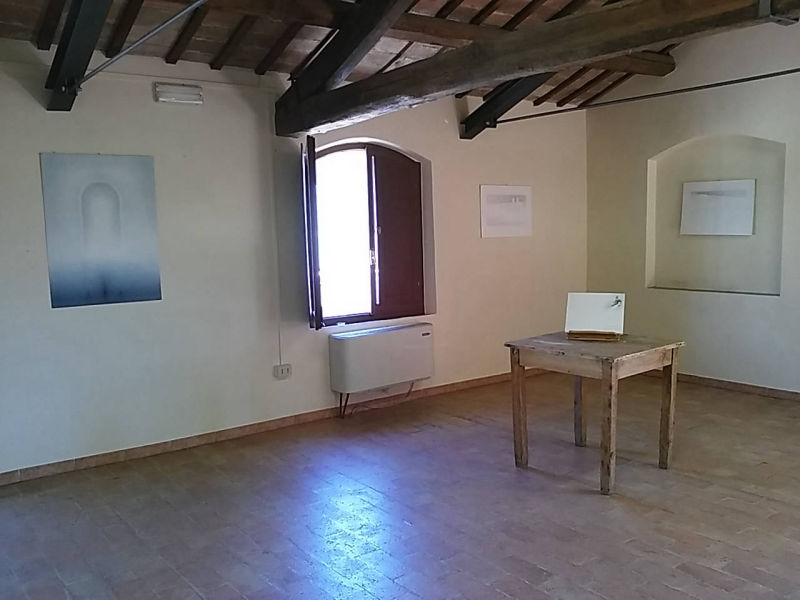 allestimento nel vecchio mulino
allestimento nel vecchio mulino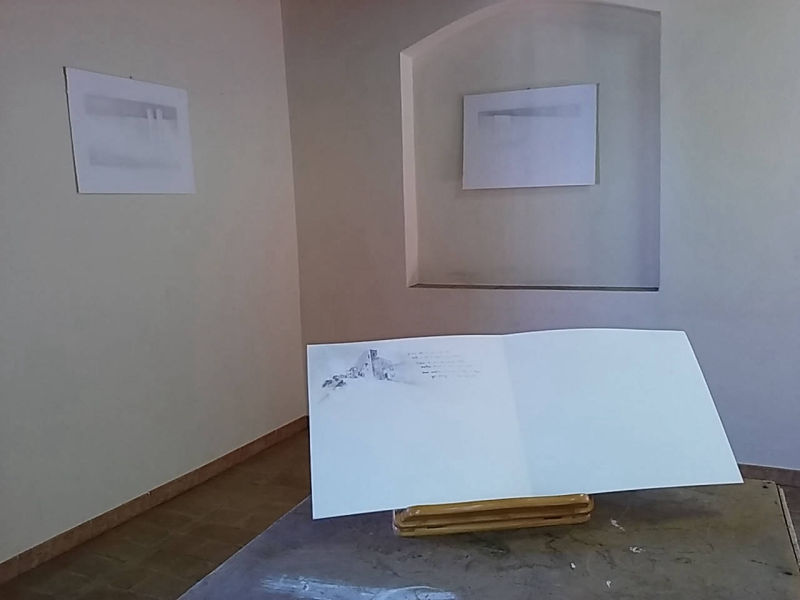 allestimento nel vecchio mulino
allestimento nel vecchio mulino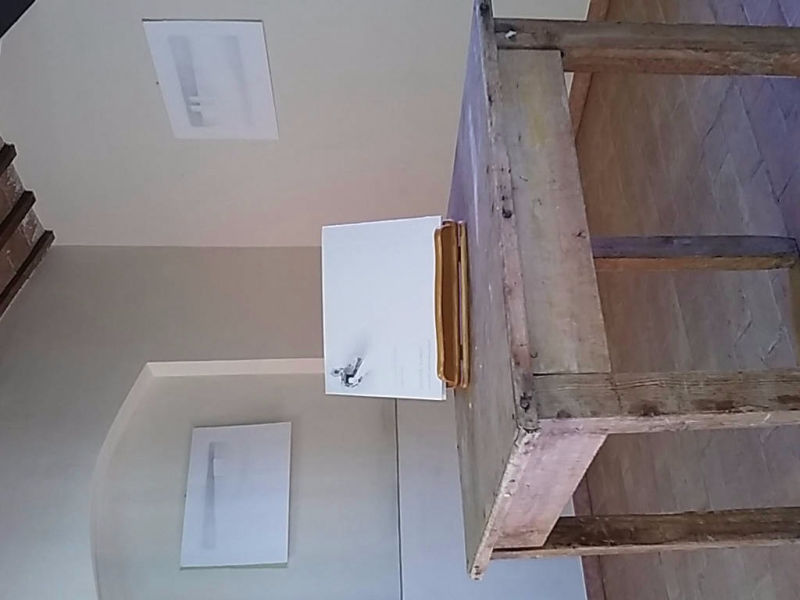 allestimento nel vecchio mulino
allestimento nel vecchio mulino